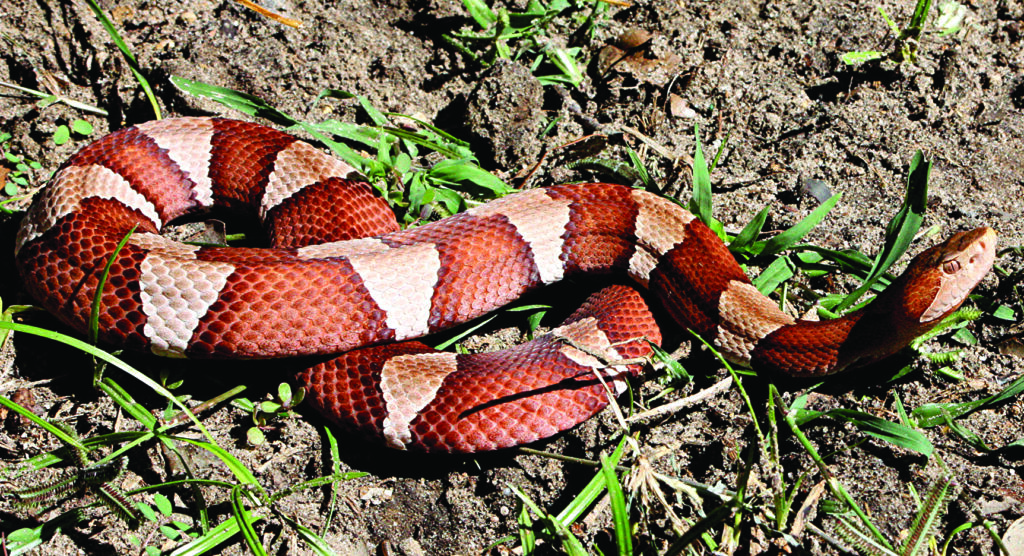
Normally, a rare occasion, local officials said there have been several Copperhead snake bites in neighboring communities in Atascosa County this past week. There were reportedly three adult patients with Copperhead bites in one day, and also a pediatric bite in the past week.
“We have had quite a few recently,” said Methodist Healthcare rep Lauren McCormick, after multiple patients sought care in Atascosa County alone this past week.
Emergency Room doctor, William Stone, has worked in emergency medicine for over 12 years, and noted he has never seen such a large amount of snake bites in such a short time frame.
“I’ve never seen this happen. It’s very new to us to see this many snake bites,” Dr. Stone said. “We treated a pediatric copperhead bite very recently and then we had three copperhead bites all in one day last week. In my 12 and a half years in emergency medicine, I’ve seen maybe 10 snake bites. I’ve been here in Jourdanton for a year and a half and had only seen one rattlesnake bite in my time here. ”
Dr. Stone said the rural hospital does have anti-venom for Copperhead and Rattlesnake on hand, though Coral snake anti-venom is hard to find. Stone noted that Copperhead bites emit a hemolytic toxin that causes the breakdown of red blood cells. Copperhead bites can cause hemorrhaging, and/or bacterial infections in some cases, he noted.
“It is very important to get yourself to the ER as soon as possible, to get checked out,” Dr. Stone said. “I would suggest going to the nearest hospital. We do have the anti-venom readily available here in Jourdanton. In some cases we do have to transfer to San Antonio for an ICU/Critical Care setting.”
Local herpetologist Blaine Eaton, of Devine, offered some thoughts on the rash of snake bites.
“Snakes are looking for water right now, and they will come right up on your front porch to drink out of the dog bowl,” Eaton said. “This happened a couple years ago when we were going through a serious drought. I always tell people if you have animals outside, make sure their water bowl is away from the house, but beware, because the snakes will come to drink there.”
They will also seek out water underneath mobile homes where water condenses on pipes, and in flowerbeds that are moist, he noted.
“This weather is really affecting snakes. I’ve seen a lot of them are thin and skinny out there. They are having trouble finding water and food right now,” Eaton said.
And then there’s this record heat.
“There are a couple theories about heat, but some people believe the heat does make them a little more aggressive. Snakes are usually hiding some place cool during the heat of the day and start moving around in the evening around 7-8 pm,” Eaton said.
There are three native snakes to be wary of around here.
“We do not see Cottonmouths around here. They are primarily found in lakes and rivers. It’s the Diamondback Rattlesnakes, Copperheads, and Coral Snakes that I am seeing around here,” Eaton adds. “They will come up and drink from your pools too. The chlorinated water doesn’t bother them.”
We also reached out to Medina Regional in Hondo, and thankfully they have not seen any venomous snakebites recently.
According to a research paper by the University of Missouri School of Medicine, Copperhead bites are extremely rare. The incidence of bites by these venomous snakes is 16.4 per million population per year in the US. In Texas, it is slightly more common with about 44 per million population per year. (Source: Bites by Copperheads (Ancistrodon contortrix) in the United States)
Most hospitals carry anti-venom for Rattlesnake bites as well as Copperhead. However, Coral snake anti-venom is hard to find due to low demand, stopping manafacturing.
According to poison.org, “The traditional treatment for coral snake envenomation has been a horse-derived IgG antibody antivenom produced by Wyeth Pharmaceuticals (now a subsidiary of Pfizer, Inc.) called the North American Coral Snake Antivenin. However, the manufacturer stopped production in 2006. The remaining available antivenom has passed the manufacturer-assigned expiration date of 2008, but FDA continues to provide information on expiration date extensions based evaluation of stability data.”
One local doctor noted that when needed, a larger hospital may contact or coordinate with area zoos to acquire the needed anti-venom.